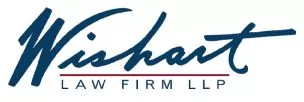On April 5, 2016, the Ministry of the Environment and Climate Change (MOECC) released proposed changes to two regulations that form the backbone of the cap and trade program and two additional documents under Ontario's Cap and Trade Program. The proposed amendments will affect the methods for determining the number of free allowances to be distributed to particular facilities and other administrative requirements of Ontario's Cap and Trade Program.
The changes being considered include will affect the:
- Cap and Trade Program Regulation (O Reg. 144/16: Effective July 1 2016)
- Methodology for Distribution of Ontario Emission Allowances Free of Charge dated December 12, 2016
- Quantification, Reporting and Verification of Greenhouse Gas Emissions Regulation (O Reg. 143/16: Effective January 1, 2017)
- Guideline for Greenhouse Gas Emissions Reporting (Effective January 1, 2017)
The proposed changes are set out in the Proposed Amendments to the Cap and Trade and Reporting Regulations — Spring 2017. They include:
- Amendments to the Methodology for the
Distribution of Ontario Emission Allowances Free of Charge
including:
- Making it clear that facilities that receive indirect useful thermal energy (e.g., imported steam) and pass some of it on to other facilities will be eligible for distribution of Ontario emission allowances free of charge (free allowances) only for the portion they use.
- Changing the Methodology applicable to particular facilities, from the energy use-based and historical absolute emissions methods to the product output benchmark or historical emissions intensity methods.
- Modifying existing product output benchmarks and historical emissions intensities to better align with facility and sector emissions.
- Proposed technical amendments to the
Guideline for the Reporting Regulation include:
- Ensuring the compliance obligation for emissions from process fuels from iron and steel production is imposed on the iron and steel producer even in situations where the process fuels have been transferred from one facility to another facility prior to combustion and resulting emission of greenhouse gas.
- Ensuring all emissions from the combustion of natural gas delivered to a participant with a compliance obligation (capped emitter) bear a compliance obligation. This addresses a unique situation in which no entity has a compliance obligation in respect of greenhouse gas emissions where natural gas that is delivered to a capped participant is subsequently transferred to an entity that is not subject to a compliance obligation
The proposal has been posted for a 45-day public review period starting April 5, 2017. The MOECC has posted a summary of the proposed amendments on the Environmental Registry. The deadline to provide written comments that will be considered as part of the decision-making process by the MOECC is May 20, 2017.
The content of this article is intended to provide a general guide to the subject matter. Specialist advice should be sought about your specific circumstances.



